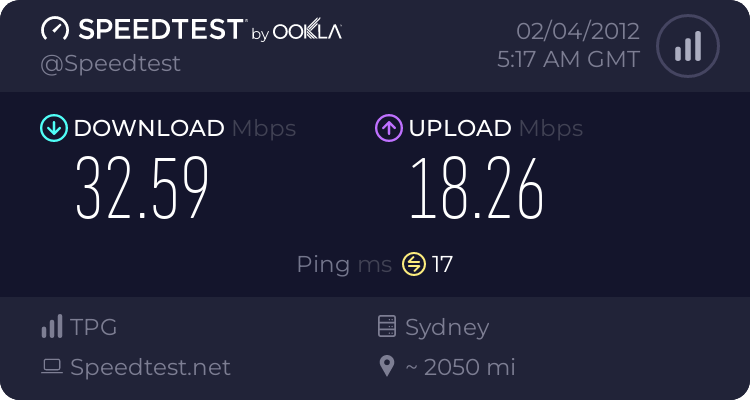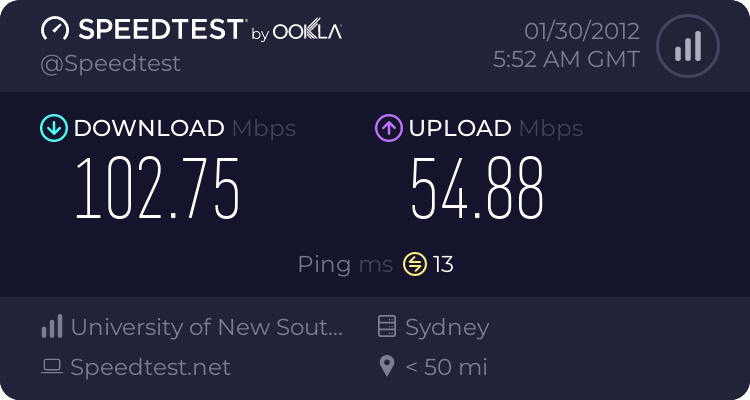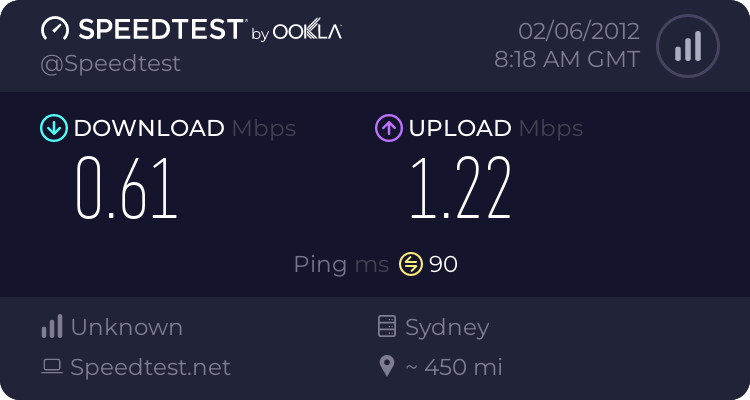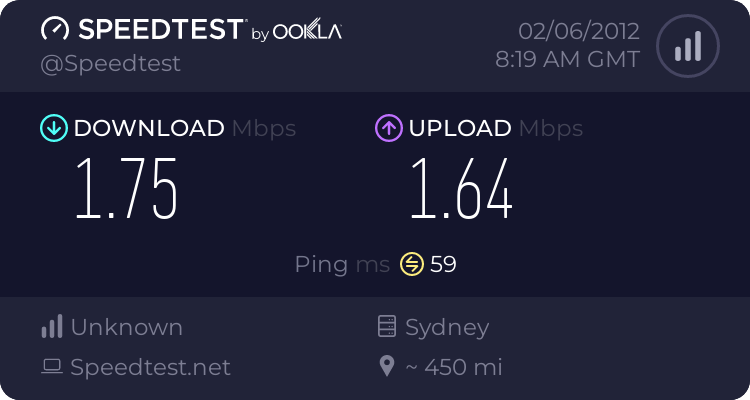MrBrightside
Brightest Member
- Joined
- Jan 18, 2010
- Messages
- 2,033
- Gender
- Undisclosed
- HSC
- N/A
Hi,
I've had cable, and I cannot tell the difference in speed between ADSL2+ around 7.51 Mbps. (The uploading on speedtest.net takes for ever to initiate) and the cable net, will randomly drop to 1.51 Mbps then shoot up to 25 Mbps at times :/ is there something wrong with cable net?
My results on my cable net are as follows:
For speed tests, I usually get ~20 Mbps, but it does drop down to 13 and 1 Mbps.
For pin tests it randomly jumps down to an F grade and then it will be a B grade. :/
Test 1
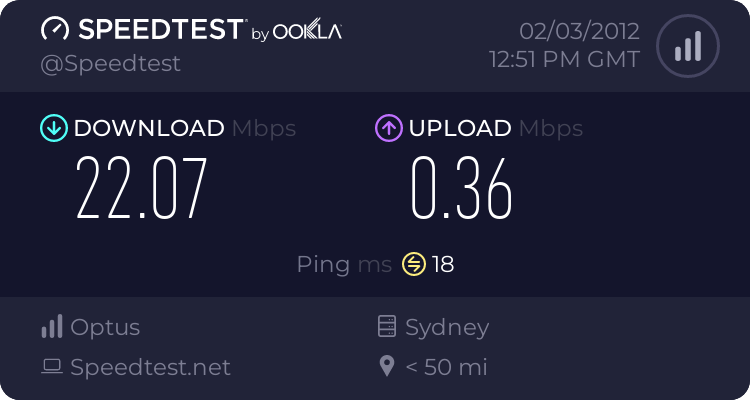
Test 2
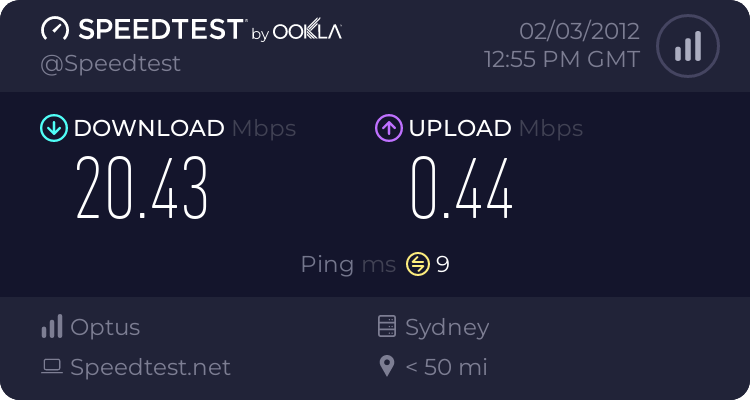
Test 3
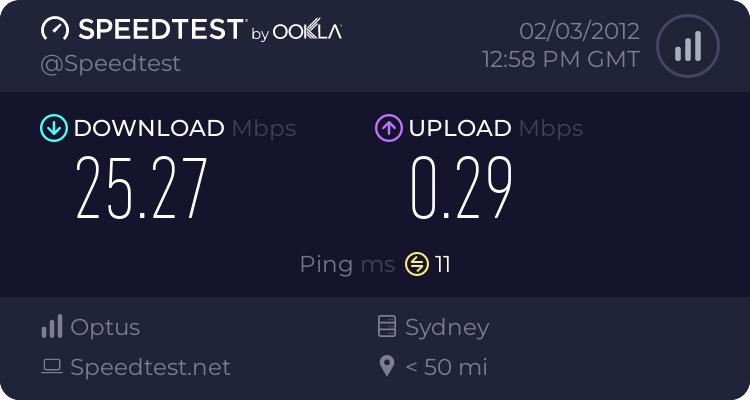
Test 1

Test 2

Test 3

I've had cable, and I cannot tell the difference in speed between ADSL2+ around 7.51 Mbps. (The uploading on speedtest.net takes for ever to initiate) and the cable net, will randomly drop to 1.51 Mbps then shoot up to 25 Mbps at times :/ is there something wrong with cable net?
My results on my cable net are as follows:
For speed tests, I usually get ~20 Mbps, but it does drop down to 13 and 1 Mbps.
For pin tests it randomly jumps down to an F grade and then it will be a B grade. :/
Test 1

Test 2

Test 3

Test 1

Test 2

Test 3




